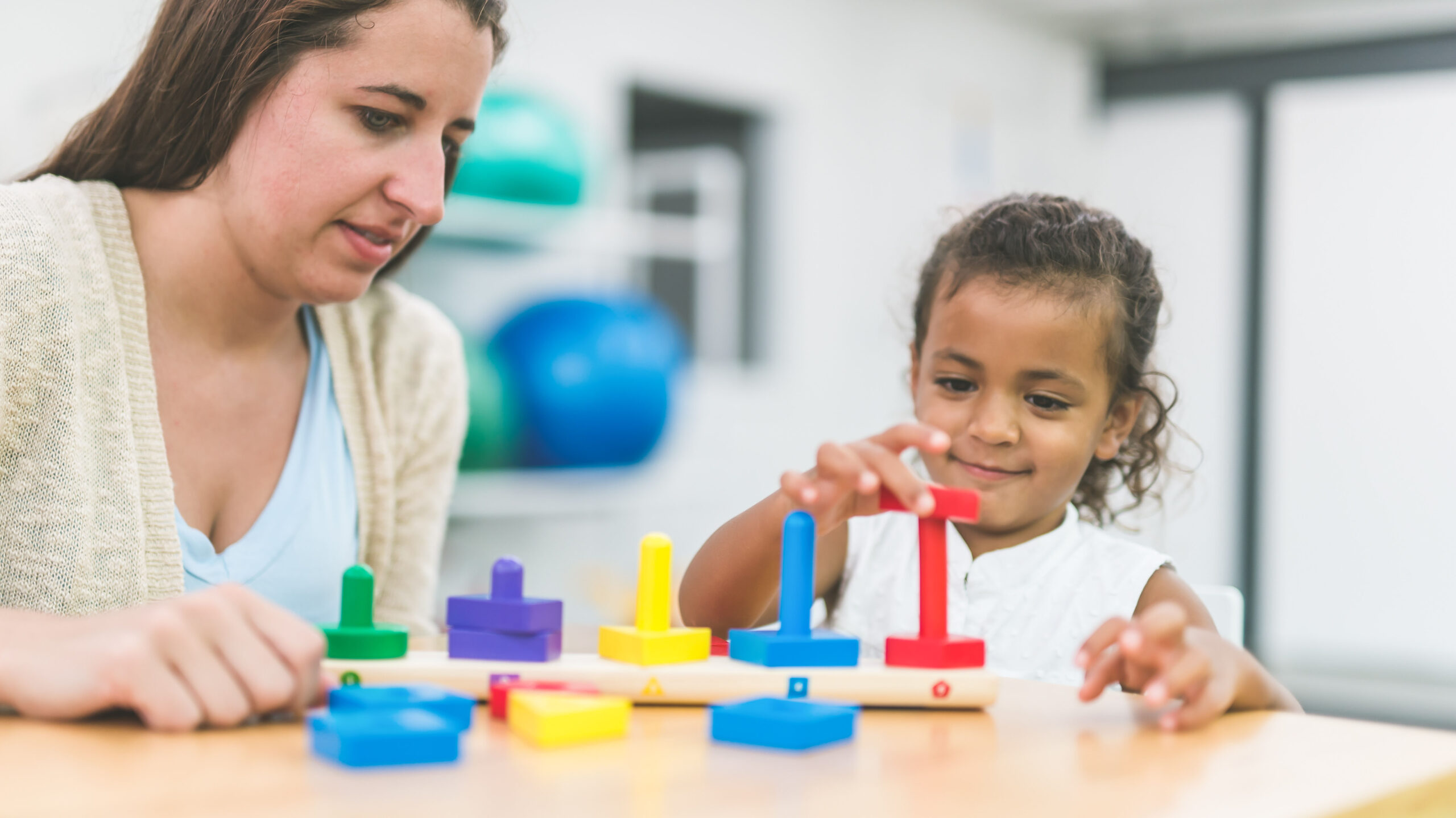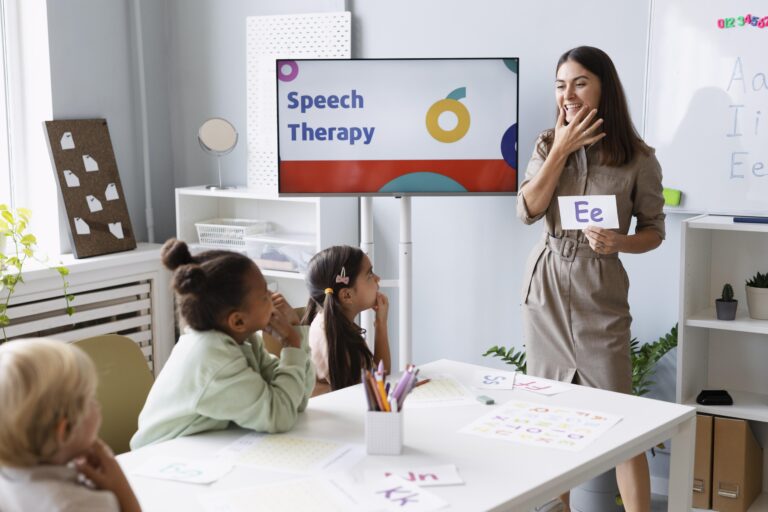Critical Role of Occupational Therapy in Sensory Evolution
Occupational therapy stands as a vital tool in the sensory evolution landscape, offering more than just medicine; it’s a life-altering skill set for individuals navigating sensory challenges. As an organization dedicated to nurturing neurodiverse individuals, our focus is to minimize discrimination by fostering capabilities that promote independence and self-confidence. This type of therapy equips individuals with autism and other sensory sensitivities to thrive in their daily activities. In this article, readers will discover how occupational therapy paves the way for remarkable progress in both personal and professional spheres for those with sensory differences, unveiling the transformative effect it has on child development and beyond.
Key Takeaways
- Occupational therapy is crucial for sensory processing and motor skills development
- Structured play in occupational therapy aids in social and cognitive growth
- Early intervention is key for optimal developmental trajectory in children
- Assistive devices and digital tools enhance sensory integration therapy
- Occupational therapists adapt strategies for unique sensory needs in various settings
Exploring Sensory Integration Through Occupational Therapy
Occupational therapy stands as a cornerstone in the sensory evolution of individuals grappling with sensory processing disorders. By delving into the fundamentals of how the brain interprets sensory information, occupational therapists apply their expansive knowledge to address the gaps in a person’s perception of the world around them. Sensory disorder school. These professionals use a variety of techniques to strengthen muscle coordination and sensory responses, thereby supporting clients in navigating daily life with greater ease. They play an instrumental role in devising personalized learning strategies that cater to the unique needs of each individual, creating pathways for these individuals to experience a fuller, more engaging life. With podcast series and resource centers now shedding light on their invaluable work, the value of an occupational therapist’s contribution has never been clearer.
Understanding Sensory Processing Disorders
At the intersection of music and neuroscience, experts uncover critical insights into Sensory Processing Disorders, conditions where the brain faces challenges in organizing and responding to information that the senses take in. This disconnection can manifest in adverse reactions to sound, a predicament evidenced in the realm of music therapy, where certain rhythms and melodies are exploited to foster harmony within the neural pathways, offering a unique therapeutic angle for individuals with these disorders.
An understanding of Sensory Processing Disorders informs the tailored strategies embedded within each Individualized Education Program, ensuring that learning styles align with neurodiverse requirements. As educators and therapists ponder the implications of neuroscience research for students with dementia, early and sustained interventions through occupational therapy are viewed as pivotal in bolstering cognitive functions and sensory processing abilities.
Role of Occupational Therapists in Enhancing Sensory Integration
Occupational therapists adeptly identify the signs and symptoms that characterize difficulties with sensory integration, often associated with pervasive developmental disorders. Their interventions are meticulously crafted to be sensory-friendly, enabling safer and more comfortable environments for growth. In doing so, they are uniquely positioned to bolster the confidence of neurodiverse individuals, tailoring autism therapies to suit each person’s distinct needs and preferences.
By offering an array of specialized techniques, these therapists seek to empower individuals to navigate sensory experiences with increased skill. The progress made in therapy sessions often translates into notable improvements in daily life, reinforcing the critical role these professionals play in advancing sensory integration and enhancing overall well-being for those with sensory processing challenges.
Enhancing Daily Living Skills for Individuals With Autism
Within the caring embrace of occupational therapy, professionals zero in on equipping individuals with autism with essential skills for daily living. These therapies are grounded in the profound understanding that each human being possesses distinct learning styles influenced by science, culture, and personal experience. In schools and therapy centers alike, occupational therapists meticulously develop tailored strategies aimed at enhancing self-care routines that form the bedrock of independence. Additionally, they integrate structured play—an exercise in strategizing—to finely tune motor skills, social interactions, and cognitive abilities. This holistic approach not only promotes necessary life skills but also enriches the cultural fabric of educational and therapeutic settings, fostering an environment where every individual can thrive.
Tailored Strategies for Improving Self-Care Routines
Adapting the curriculum to the distinctive needs of learners with autism, occupational therapists in private school settings collaborate to establish self-care routines aligned with each student’s aptitudes. These routines are introduced within a least restrictive environment, ensuring that interventions are respectful of each child’s psychological threshold and also promoting continuous, real-world application of skills to encourage autonomy.
Parents seeking additional guidance or wishing to tailor the approaches to their child’s self-care further can reach out by requesting personalized plans via the school’s email address. With an intersectional approach combining psychology and special education, occupational therapists proactively adjust self-care strategies to facilitate the highest level of independence and confidence in their students.
Implementing Structured Play Activities to Build Skills
Occupational therapists emphasize structured play as a dynamic tool that enhances executive functions in individuals on the autism spectrum. Sensory play development plays a crucial role in this process. By engaging in activities specially designed to stimulate problem-solving and decision-making, patients with sensory processing disorder find a conducive space for learning and growth.
As a cornerstone of intervention, these structured play scenarios offer a dual benefit: they bolster critical developmental areas while also providing a framework for caregivers to understand and support the ongoing development of those under their charge. Play, therefore, becomes a bridge between therapy and home, vital for those navigating the complexities of autism spectrum conditions.
Addressing Sensory Challenges in the Workplace
Delving deeper into the arena of occupational therapy, a pressing concern is the optimization of work environments to accommodate the health and cognition needs of neurodiverse individuals. The intentional assessment of workspaces for potential sensory triggers lays the groundwork for implementing sensory integration therapy, thus minimizing disruptions and maximizing employee comfort and efficiency. As understanding deepens about how different sensory inputs can affect daily productivity, occupational therapists are developing adaptive techniques that hone life skills crucial for workplace success. This intricate balance of promoting sensory-friendly spaces while advancing vocational abilities underscores the transformative impact of occupational therapy within the professional sphere.
Assessing Work Environments for Sensory Triggers
Occupational therapists are attuned to the nuances of sensory overload in the workplace. Their research-backed assessments aim to detect triggers that can be debilitating for neurodiverse employees, which are also applicable in environments ranging from primary care facilities to bustling preschool classrooms.
In recognizing the importance of individual workstations, these specialists focus on elements like desk placement and ambient conditions. Through careful evaluation, they help create workspaces that support productivity and mitigate the risk of sensory overwhelm, ensuring a harmonious balance for all employees.
Adaptive Techniques for Increased Productivity and Comfort
Occupational therapists are pioneering adaptive techniques that appeal to the individual’s sense of control within their work environment, particularly vital for those with a pervasive developmental disorder not otherwise specified. Through modifications such as sensory-friendly lighting and customized workstations, these professionals foster a workplace where nursing and other health-related tasks can be performed with increased comfort and efficiency.
In response to developmental disorders, occupational therapists are tailoring environments to minimize the impact of disease on daily productivity. Interventions may include the use of noise-canceling headphones or the implementation of structured breaks, all designed to reduce distractions and enable individuals to concentrate better, enhancing their ability to complete tasks to the best of their abilities.
The Impact of Occupational Therapy on Child Development
Occupational therapy emerges as a pivotal element in the sensory and cognitive development of young learners, focusing particularly on those in the critical early stages of life. Specialists in this field deploy early intervention strategies, targeting toddlers and preschoolers to steer the malleable human brain onto an optimal developmental trajectory. These foundational years are a time when attention to sensory stimuli and the building blocks of learning are most sensitive. Interventions emphasize the cultivation of motor skills and social interaction, fortifying them through structured and therapeutic play. As such strategies gain traction, they challenge conventional educational models like unschooling by emphasizing structured support without compromising the child’s natural curiosity and explorative spirit. For families, navigating options for therapy and the maze of insurance coverage becomes less of an ordeal as the proven benefits of early occupational therapy become clear, bridging gaps in both understanding and access to pivotal developmental support.
Early Intervention Strategies for Toddlers and Preschoolers
Occupational therapists collaborate closely with parents to integrate early intervention strategies that can profoundly influence a child’s developmental trajectory. Recognizing the importance of parental involvement, these strategies may include practical activities for families practicing homeschooling, where structured play with sensory tools like trampolines can significantly enhance motor skills and coordination.
In the sphere of early childhood development, proactive intervention is often key to mitigating sensory processing challenges. Occupational therapists are adept at creating targeted activities that not only promote healthy development but also serve as a critical tool for marketing the benefits of early intervention to parents and educators, ensuring that sensory integration is prioritized from a young age.
Promoting Motor Skills and Social Interaction Through Play
Occupational therapy plays a crucial role in bolstering the motivation of children facing medical diagnoses that impact motor skills and social abilities. By incorporating structured play in settings such as charter schools, therapists design interventions that transcend social isolation, drawing children into collaborative activities that improve both their physical coordination and their ability to engage with peers.
Through detailed evaluation, occupational therapists pinpoint the specific needs of each child, crafting play-based strategies that address those areas requiring development. This approach not only enhances physical dexterity but also lays the foundations for more profound social connections among students, counteracting the detrimental effects of feeling isolated or different from their peers.
Innovative Tools and Technologies in Sensory Therapy
In the pursuit of sensory integration, occupational therapists harness assistive devices and digital tools, broadening the possibilities for individuals with sensory processing differences. Techniques employing odor recognition can sharpen olfactory processing, which is vital within areas like the school cafeteria, where smells are abundant and can be overwhelming. Devices simulating eye contact scenarios guide individuals in interpreting and responding to nonverbal cues, improving their social interaction skills in nuanced environments. These technologies, alongside virtual reality platforms, immerse patients in controlled, multisensory experiences that can be tailored to train the brain to process complex sensory information, such as distinguishing between textures or tastes. Feedback mechanisms within these tools play an essential part, delivering real-time responses to therapists and clients, enabling them to adjust therapies with precision for optimal outcomes in sensory development.
Using Assistive Devices to Enhance Sensory Processing
Occupational therapists in the field of psychiatry are increasingly incorporating assistive devices into treatment plans to refine sensory processing abilities. These devices, which can now align with criteria set forth in the Diagnostic and Statistical Manual of Mental Disorders, facilitate a deeper understanding of individual sensory issues and enable more accurate interventions.
For children who may struggle with proprioception, the use of sensory tools during recess has shown marked improvement in their ability to engage and thrive in a shared play environment. This not only obeys the law of inclusive education but also significantly advances their sensory integration, paving the way for healthier social interactions and academic success.
Virtual Reality and Other Digital Tools Supporting Therapy
Virtual reality harnesses the internet’s potential to immerse patients with disabilities in a controlled, engaging environment. This technology is especially significant for those with attention deficit hyperactivity disorder, as it commands their focus and directs it toward achieving therapeutic goals within a captivating virtual setting.
Accessibility in therapy is of paramount concern, and digital tools are breaking down barriers for individuals with various disabilities. By offering customizable experiences, these modern aids provide a tailored approach to therapy, ensuring that each patient can progress toward their sensory integration goals effectively and efficiently.




